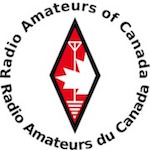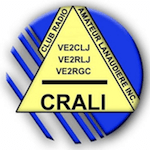My Homemade VHF/UHF Dual Band Vertical Dipole Antenna
by Robert Ewers K9HOU
(Spring, Texas, U.S.A.)

I enjoy building antennas. A fellow Ham recommended that I try building a 2 meter / 70 centimeter vertical dipole antenna. I read the article he was referring to (see reference below) and it looked to be a nice antenna that others were having success with.
My Homemade Version
Unlike in the article, I did not have a sheet of ‘plexiglass’ insulating material around the QTH. I did have PVC though. Also I had no stainless steel whips that I wanted to cut up.
However, I did have some #10 AWG copper wire left over from some grounding installation.
I cut 2 pieces of #10 wire 25 inches long (63.5 cm). I bent them both in a ‘V', 19-inch (48.26 cm) on one leg and 7-inch (16.5 cm) on the other leg. Make that a very tight fit at the bend. This is where the coax cable will be soldered. Make sure both antenna elements are exactly the same. If need be, cut to make them equal.
I had a PVC ½ to 1 1/4 adapter for the base to mount to my PVC mast. My vertical section is 24 inches ( 61 cm).
Then a 90-degree elbow 1/2 inch PVC to turn horizontal for 18 inches (46 cm). This horizontal section is needed to separate the antenna from being interfered with by its own coax feed line.
Now at the end of this 18 inch we will have a 1/2 inch PVC 'T' . The coax is fed up all of the PVC pieces into the 'T' where we strip the coax back to solder the center conductor to the top wire at the apex of the bend.
We repeat the soldering of the shield braid to the bottom wire. Both of these are done with the coax inside the ’T’ and the wires top and bottom inside the ‘T'. I used a little silicone caulk inside the ‘T’ to insulate the connections from each other inside the ‘T'. I mixed and filled the T with auto body fill. I did one side at a time to be sure I had the elements straight.
Then it was time to join the ‘T' to the 18-inch section with PVC cement, then to the elbow to the 24-inch section to the adapter for the mast section top. I used 1 1/4 PVC mast. The coax is all inside the PVC pipe.
Next came tuning the antenna. I used an antenna analyzer to find where the antenna was resonating. This frequency should be lower than what we want. I use WestMountainRadio.com a fast calculator that will tell you what size you need for the antenna to be resonant at the desired frequency. I also use the calculator to find the size of the antenna for the frequency that my antenna analyzer found the antenna to be. Now cut the elements equally (top & bottom). I like to cut ½ of what I need, recheck and cut again.
I slipped the antenna onto the mast section and secured with self-tapping screws. This is on the top end of the 10-foot section of 1 1/4 PVC and the bottom adapter is cemented on.
The bottom adapter is secured with self-tapping screws to the 3-inch, 10-foot section of PVC pipe. A hole drilled into the 3-inch PVC, about 8 feet AGL, allows the coax to exit to connect to the QTH.
I do not use a balun at the feed point. I have 1:1 in the middle of the 144-148 MHz band with 1:1.1 at my club’s repeater frequency of 146.660. I painted the whole thing a dull dark gray (U.S. Sailors know it as “dawn gray”) so it would not stand out in the HOA environment.
Reference
The article that inspired me to build my vertical dual band VHF/UHF antenna:
http://amateurradio.bz/2m-70cm_vertical_dipole_antenna.html
73 de Bob K9HOU
Comments for My Homemade VHF/UHF Dual Band Vertical Dipole Antenna
|
||
|
||
73 de VE2DPE
Claude Jollet
104-30 avenue des Berges,
Notre-Dame-des-Prairies, Québec, Canada J6E 1M9
QTH Locator: FN36gb
Disclosure
If
you make a purchase via a link on this site, I may receive a small
commission on the transaction, at no extra cost to you. Thank you!
(One word queries work best)
FOUND THIS
SITE
USEFUL?
VE2DPE
Is a member
in good standing
of



Also a proud member of an international community of solopreneurs
using SoloBuildIt!
(SBI!)
to promote my self-published eBooks
since 2005.
See my review
of this unique product for online businesses.
CQ CQ CQ
If you have a question, a comment or a topic you would like me to cover, please do not hesitate to ask here.









